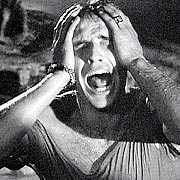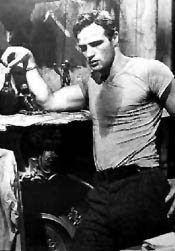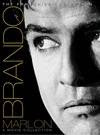
I don't know if Tennessee Williams ever drew anything but I regard him as a cartoonist. You could say that he's a cartoonist with a typewriter, rather than a pencil. His stories are over-the-top and funny, and his characters are fun to draw. Here's a drawing I did (below) of Anna Magnani from the William's film, "The Rose Tattoo." Magnani was brilliant in this film. What an under-rated actress!
Williams comes from the Ibsen-Chekhov-Strindberg school of writing. These guys liked character conflict, even when it didn't make any sense. It was really drama for the sake of drama with the then-fashionable nihilism added to justify it. Actors liked the plays because they were full of dramatic fireworks but the public was slow to warm to them. I think people were put off by the unrelenting seriousness. These were pretty depressing plays.
The writer who saved the movement from oblivion was Tennessee Williams and he did it by making the new style funny. Oh, his work was still serious on some level but it was serious the way cartoonists like to be serious, which is really a caricature of seriousness. In a Williams play you never knew whether to laugh or cry.
Maybe Williams' best-known play was "A Street Car Named Desire." Brando was great in the film version! Even John K who hates Brando in other films, likes him in this one! I read that Brando had a whole closet of tee-shirts for this film, each one stretched and bunched up to a different side to make it seem tight from a different camera angle. Here's (above) a half-minute clip from the film.












 I don't mean to say that all potraits should be sanitized and idealized. Not at all. But the more specific the picture is the more the style should be iconic, cartoony or deliberately mannered. The picture above by Otto Dix is a good example. It's very specific but it's cartoony and it works.
I don't mean to say that all potraits should be sanitized and idealized. Not at all. But the more specific the picture is the more the style should be iconic, cartoony or deliberately mannered. The picture above by Otto Dix is a good example. It's very specific but it's cartoony and it works.
 Do you agree?
Do you agree?












